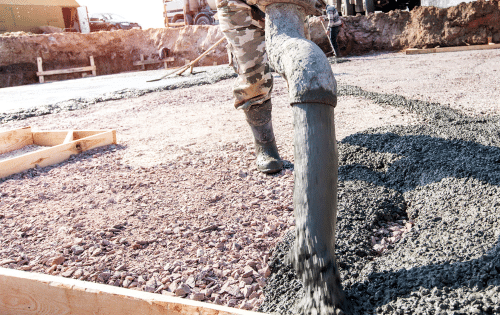Hot Weather Concreting: Understand the Risks

Hot weather concreting is a risk. The combination of high temperatures, wind and low humidity create an unfavourable environment for proper curing. By placing concrete in the heat you run the risk of cracking, crazing, surface crusting and lower 28-day strengths. Though it is best to avoid placing concrete in high temperatures, this is not always possible through summer in Australia. As a precaution in these extremes, some steps can be taken to reduce the risks when concreting in hot weather.
Reducing Risks:
- Where possible, avoid placing concrete in the middle of the day when temperatures are highest.
- Have enough labour onsite to place and finish the concrete as quickly as possible.
- Lightly wet down formwork, reinforcing, and the sub-surface before placing.
- Place the concrete as soon as possible – Prevent additional heat generated by over mixing.
- Where possible, shade the area and/or create windbreaks to protect the surface from direct sunlight or wind.
- Apply aliphatic alcohol immediately after screeding and bull-floating. The use of aliphatic alcohol controls the evaporation of bleed water.
- Re-apply aliphatic alcohol to concrete after each finishing action. Please note that aliphatic alcohol is not a curing compound, you must still cure your concrete and it is essential to ensure that aliphatic alcohol is compatible with your curing compound.
- Apply a membrane-forming or penetrating curing compound to the surface of the concrete after set and as soon as you can walk on the surface. This is to ensure that maximum moisture is retained in the slab.
In our climate, it is difficult to avoid placing concrete in the heat. However, by properly protecting, curing and caring for your concrete, you can minimise the risk of problems in your project.

